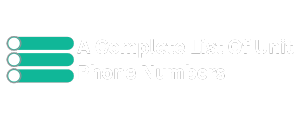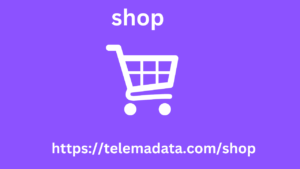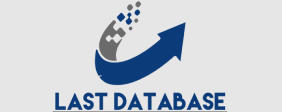In recent times, inbound marketing and demand generation have gained prominence in digital marketing discussions, sometimes presented as opposing strategies.
But, over time, perceptions and strategies have changed.
Inbound marketing, while still a vital element, does not cover the entire landscape, and demand generation has increasingly made its way into digital marketing.
Now, a combination of these strategies is preferred, not only to capture the interest of potential customers, but also to proactively send the company’s message to the right people, at the right time, triggering a dialogue with the sales team.
Balancing Campaign Approaches
In the complicated world of digital marketing, as a marketing professional, you face a crucial dilemma: which strategy to adopt to maximize visibility and customer attraction to the business?
Here the balance tips between an inbound marketing strategy and a demand generation one, two powerful but intrinsically different approaches.
Inbound marketing is all about attracting customers by creating personalized and engaging content and experiences that are tailored to their needs and desires.
In this scenario
Producing valuable content that solves problems, provides solutions, and attracts customers, without explicit pressure to buy, is essential.
This creates a magnetism that attracts potential customers naturally, thanks to the high perceived value of the information shared.
On the other hand, demand generation is a more direct effort and often involves the active promotion of products or services.
Developing demand generation campaigns means sending targeted messages to the target audience in more direct and often paid ways, such as through online advertising, events, or email marketing.
The goal here is to generate a palpable demand for what the company offers, actively guiding potential customers through the sales funnel.
But how do you balance these two strategies in your marketing plan?
The ideal balance depends on your business, goals, and audience.
The challenge is to create a harmonious mix between passively attracting customers to the brand and actively promoting the products or services in the market.
To do this, it is important to start by clearly defining the objectives: if the goal is to increase brand awareness and establish an authoritative image in the industry, you may want to give more weight to inbound marketing.
If, on the other hand, the goal is to stimulate immediate action or aim for a short-term ROI, it may make sense to invest more in demand generation.
The balance between these strategies does not have to be rigid, but rather fluid and adaptable. Carefully examine the campaign metrics and be ready to make strategic adjustments based on the results and the ever-changing objectives.
Implementing a hybrid and balanced strategy will allow you to build an authoritative presence while actively and proactively responding to market needs and opportunities.
Using the buyer’s journey to select the right campaign
Navigating through the customer’s buyer’s journey is essential to outline the most suitable strategy.
Remember, your job is to support customers through every stage of the buying journey, from awareness to consideration to decision.
When audiences are still in the early stages of the buyer’s journey, where awareness and education are key, ABM and demand generation are often key strategies. Here, you aim to capture their attention, educate them about the problems your company’s product or service can solve, and position yourself as a worthwhile option.
We sell databases of all countries. The data we provide is accurate and secure. We try to provide accurate data. The data provided by us is shop constantly updated. If you need shop category data then buy from us. You can purchase data from us and use it for your business marketing without any worries.
In contrast
If you’re looking to engage customers who cambodia phone number library are in the middle or late stages of their journey, where they’re ready to actively evaluate solutions and make a choice, inbound marketing may be your most powerful ally. That’s because, at these stages, customers are looking for specific content and information that will help them make an informed choice.
However, the art lies in strategically blending adb directory both approaches, creating a holistic journey that nurtures customers at every stage of their journey.
Depending on your company and audience, you may need to weigh your efforts differently, but always maintain an active presence at every stage of the customer journey.
Maximizing the use of automation
Getting into the depth of marketing automation means embracing a world where efficiency and personalization rule.
In an era where customers are yearning for personalized experiences, automation is the means to deliver personalized experiences at scale.
Automation not only allows you to send targeted content and communications to customers in an automated and scalable way, but also to nurture them with a continuous flow of relevant and valuable content throughout their journey.
But you can go beyond simple email automation: explore using artificial intelligence and machine learning to anticipate customer needs, providing answers and solutions even before they become questions.
Deploy intelligent chatbots to answer customer queries in real time and use behavioral data to predict and react to future needs, always in an automated and scalable way.
Also, don’t underestimate the power of analytics provided by marketing automation technology.
Review metrics, analyze data, and use this valuable information to further refine your campaigns, ensuring they are as targeted and relevant as possible.
Implement a Robust Optimization Framework
Implementing an optimization framework is not just about analyzing and adjusting, but also deeply understanding metrics and implementing continuous improvement of your campaigns.
It is important not only to set up and execute your campaigns, but also to monitor them continuously to identify opportunities for improvement and refinement.
As a marketer, it is important to engage in data analysis, experimentation, and adjustments to your campaign to maximize effectiveness and return on investment. This could involve A/B testing different content, adapting messages based on audience behavior, or adjusting strategies based on market trends and audience responses.
Adopt Personalized and Segmented Approaches
Drilling deeper into personalization and segmentation in your campaigns means understanding and implementing the fine art of speaking directly to the specific needs and desires of your target audience.
When designing both inbound and demand generation campaigns, it’s important to explore beyond simply using the recipient’s name: personalize content, offers, and messages based on their previous interactions, purchasing behavior, and preferences.


